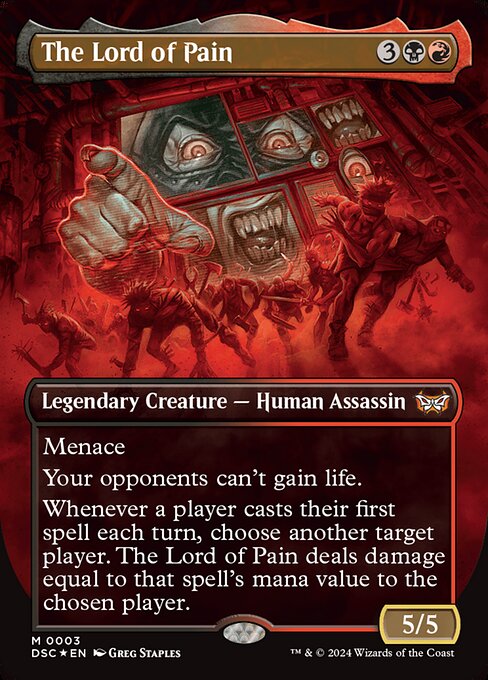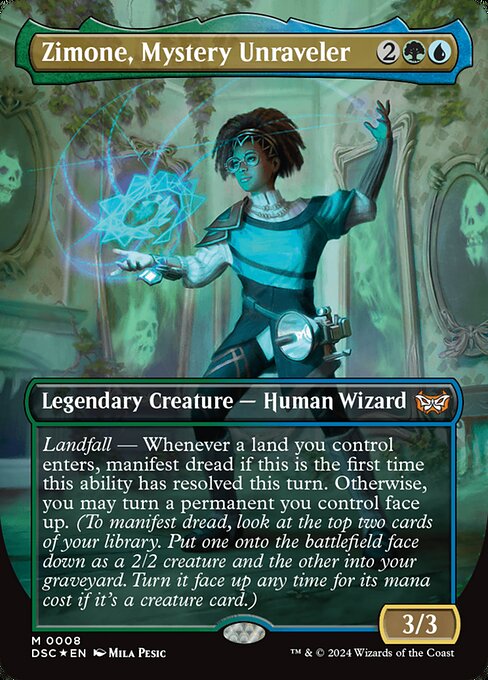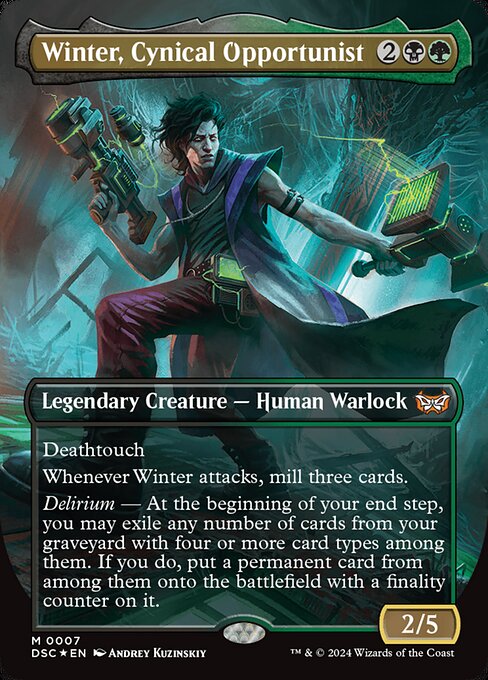Deck & Commander Strategies

The Lord of Pain
Functions as the Archenemy by leveraging scheme cards and an ability that punishes opponents for casting spells by dealing damage. The deck focuses on controlling the board with targeted removal, damage triggers, and preventing opponents from gaining life, aiming to outlast and burn down multiple opponents simultaneously.

Zimone, Mystery Unraveler
A landfall-focused deck that ramps and plays permanents to trigger landfall abilities and generate value. It aims to quickly develop a board presence with creatures and permanents to combo off or overwhelm opponents.

Winter, Cynical Opportunist
Centered on graveyard interactions and recursion, this deck leverages spells and creatures that benefit from instants, sorceries, and the graveyard to generate card advantage and board presence.
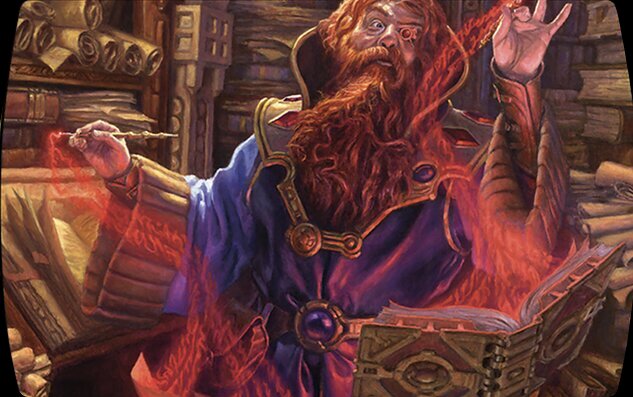
Commodore Guff
Utilizes a Super Friends (planeswalker) theme combined with Allies tribal synergy to buff creatures and control the board. The deck focuses on building a strong board state supported by planeswalkers to pressure the Archenemy.
Gameplay Insights
- 1
The Lord of Pain's ability to assign damage to different opponents upon spell casts effectively spreads pressure and punishes the table's collective spellcasting.
- 2
Strategically timing the exile of permanents, including key lands and commanders, severely disrupted opponents' resource development.
- 3
Opponents coordinated blocks to protect each other and mitigate damage, leveraging team dynamics in a multiplayer Archenemy format.
- 4
The use of Mogis, God of Slaughter introduced a recurring damage source that forced opponents to sacrifice creatures or take damage, adding a layer of attrition.
- 5
Counterspells were used to prevent critical creatures from entering the battlefield, exemplified by the countering of Vavo, maintaining board control.
- 6
The Archenemy schemes served dual roles: direct disruption of opponents' hands and boards, as well as enabling the Lord of Pain to maintain tempo and pressure.
Notable Cards
-

Mogis, God of Slaughter
-
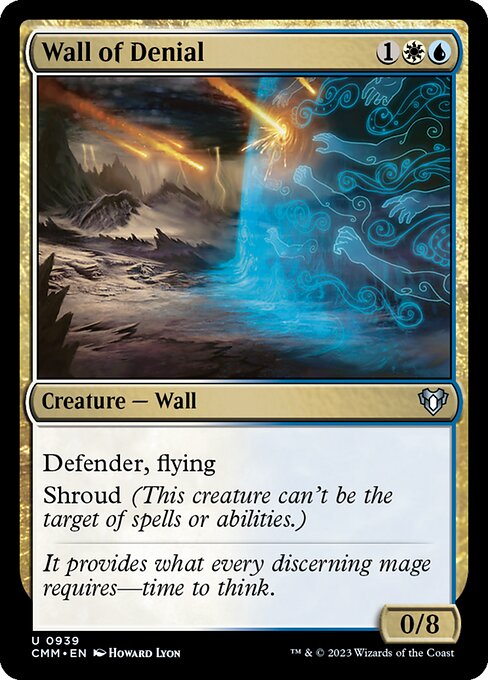
Wall of Denial
-

Oath of Gideon
-

Exotic Orchard
-

Bloodfell Caves
-

Command Tower
Gameplay Summary
The game began with the Lord of Pain player taking the Archenemy role, leveraging the new Archenemy scheme cards to disrupt opponents early by forcing discards and dealing damage based on spell casts.
The Lord of Pain's ability to deal damage whenever opponents cast spells created significant pressure, especially combined with schemes that forced sacrifices or exiling of permanents.
Opponents tried to stabilize by playing their commanders and ramping mana, with attempts to buff allies and exploit graveyard synergies.
However, the Archenemy's continuous disruption and damage kept the table on the defensive. A key turning point was when the Lord of Pain successfully exiled important permanents and prevented life gain, severely limiting opponents' recovery options.
The use of Mogis, God of Slaughter, added incremental damage each upkeep, further draining opponents.
The team of three players coordinated blocks and sacrificial plays to survive, but the Archenemy's board control and damage output made it difficult.
The game featured multiple instances of counters, sacrifices, and tactical plays around manifests and life loss, highlighting the tension between the Archenemy's aggressive schemes and the opposing players' attempts to mount a comeback.


